
How to Transcribe Voicemails to Text?
Table of Contents
- Why Transcribe Voicemails?
- Manual vs Automated Voicemail Transcription - Which is Better?
- How to Use AI to Transcribe Voicemails?
- Best Features for Professional Voicemail Transcription
- Business Voicemail Transcription Best Practices
- What are the Best Voicemail Transcription Tools?
- How to Improve Voicemail Transcription Accuracy
- Integrating Voicemail Transcription Into Business Communications
- Conclusion
Transcribe, Translate & Summarize in Seconds
Table of Contents
- Why Transcribe Voicemails?
- Manual vs Automated Voicemail Transcription - Which is Better?
- How to Use AI to Transcribe Voicemails?
- Best Features for Professional Voicemail Transcription
- Business Voicemail Transcription Best Practices
- What are the Best Voicemail Transcription Tools?
- How to Improve Voicemail Transcription Accuracy
- Integrating Voicemail Transcription Into Business Communications
- Conclusion
Transcribe, Translate & Summarize in Seconds
Transcribing voicemails to text allows businesses to efficiently manage communication and extract critical information without spending hours reviewing audio messages using advanced speech to text online software. Understanding what is audio transcription is fundamental to maximizing these benefits. Voicemail transcription services convert important voice messages into searchable, accessible text formats, enabling teams to quickly identify priorities, respond to clients, and document conversations. Automated voicemail transcription technology has revolutionized how businesses handle voice communications, providing accurate voicemail transcription for improved workflow management.
Why Transcribe Voicemails?
Transcribing voicemail delivers specific advantages for business operations. The process to transcribe voicemails provides these key benefits:
- Time Savings : Voicemail transcription software allows quick scanning of messages, prioritization, and prompt responses. Automated voicemail transcription eliminates repeated listening to recordings.
- Searchability : Voice message transcription creates searchable, retrievable text documents. Digital voicemail transcription finds information while maintaining communication records.
- Compliance : Accurate voicemail transcription provides documentation for communications. Professional voicemail to text services ensure regulatory adherence and audit trails.
- Customer Service : Transcribed voicemails enable faster responses to queries. Voicemail to text apps improve satisfaction by reducing response times.

Manual vs Automated Voicemail Transcription - Which is Better?
When choosing how to transcribe phone messages, whether you're learning how to transcribe voice memos on iPhone or exploring other options, businesses must decide between traditional and automated solutions:
Traditional Manual Transcription Techniques
Manual transcription requires listening and typing voicemail content using dictation tools. This method demands significant time and remains susceptible to human error with poor-quality audio. Manual voice message transcription leads to higher costs and potential inaccuracies.
Modern Automated Voicemail Transcription Software
Automated voicemail transcription uses AI to convert voice messages to text quickly, making it an ideal solution to convert voice to text efficiently. Harvard Business School research confirms AI enhances business efficiency. AI voicemail transcription reduces time and costs compared to manual methods, though background noise can affect accuracy.
How to Use AI to Transcribe Voicemails?
Converting voicemail to text using AI requires following these specific steps:
- Prepare voicemail files for transcription
- Create account and upload files
- Select language and manage settings
- Review, edit, and summarize content
- Download and share transcribed text
1. Preparing Your Voicemail Files for Transcription
The preparation of voicemails for transcription necessitates attention to file formats and optimal audio quality. Categorizing voicemail recordings by date, caller, or topic creates easy and timely access to digital voicemail transcription. This organizational approach enables businesses to manage and transcribe phone messages efficiently while maintaining a structured voice message archive.
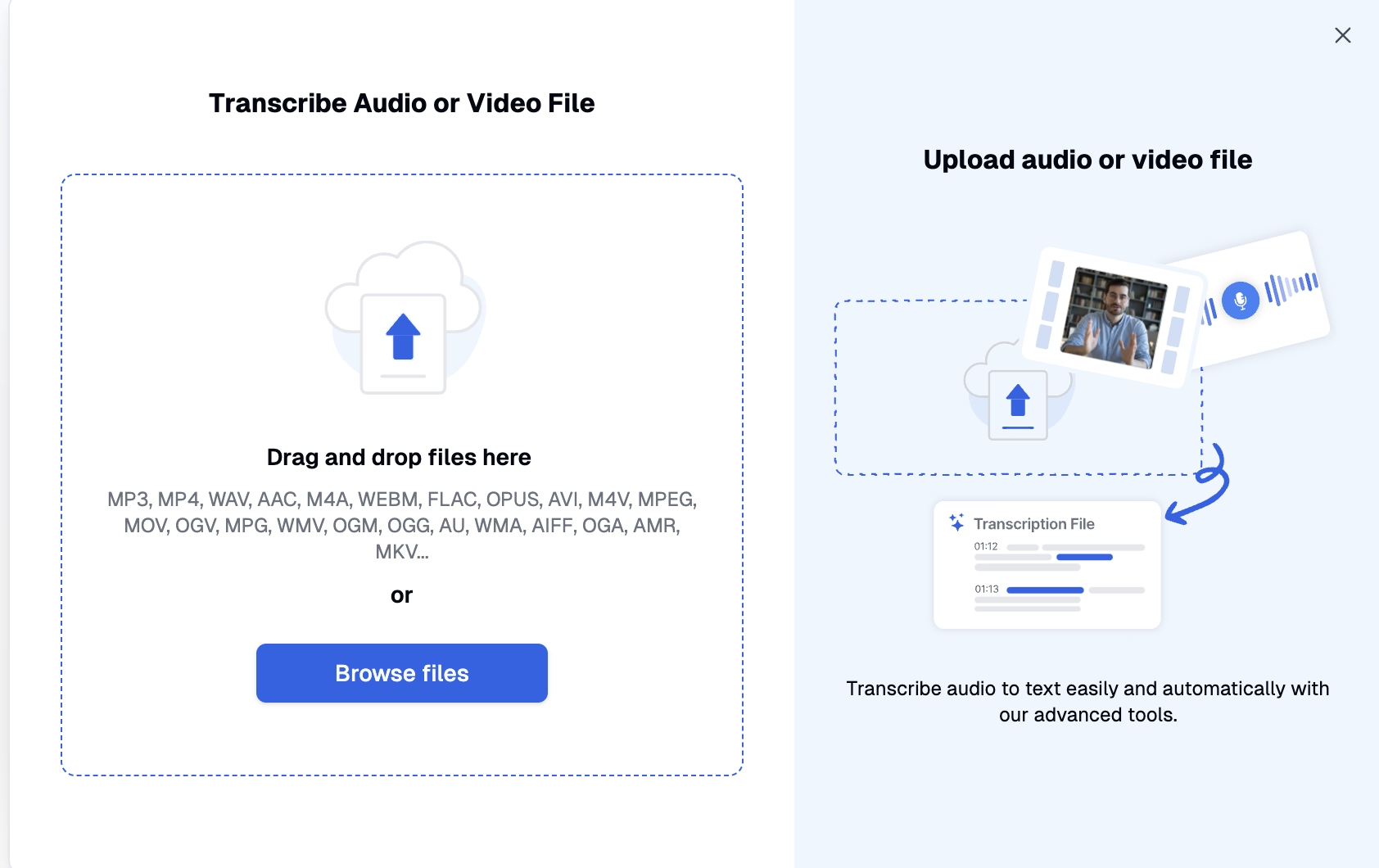
2. Create an Account and Upload the File
Visit the official website of Transkriptor and create an account using Google or Gmail credentials. After account creation, the dashboard interface will display options for uploading audio or video files. The voicemail transcription software allows direct file uploads or drag-and-drop functionality for voice message files requiring transcription.
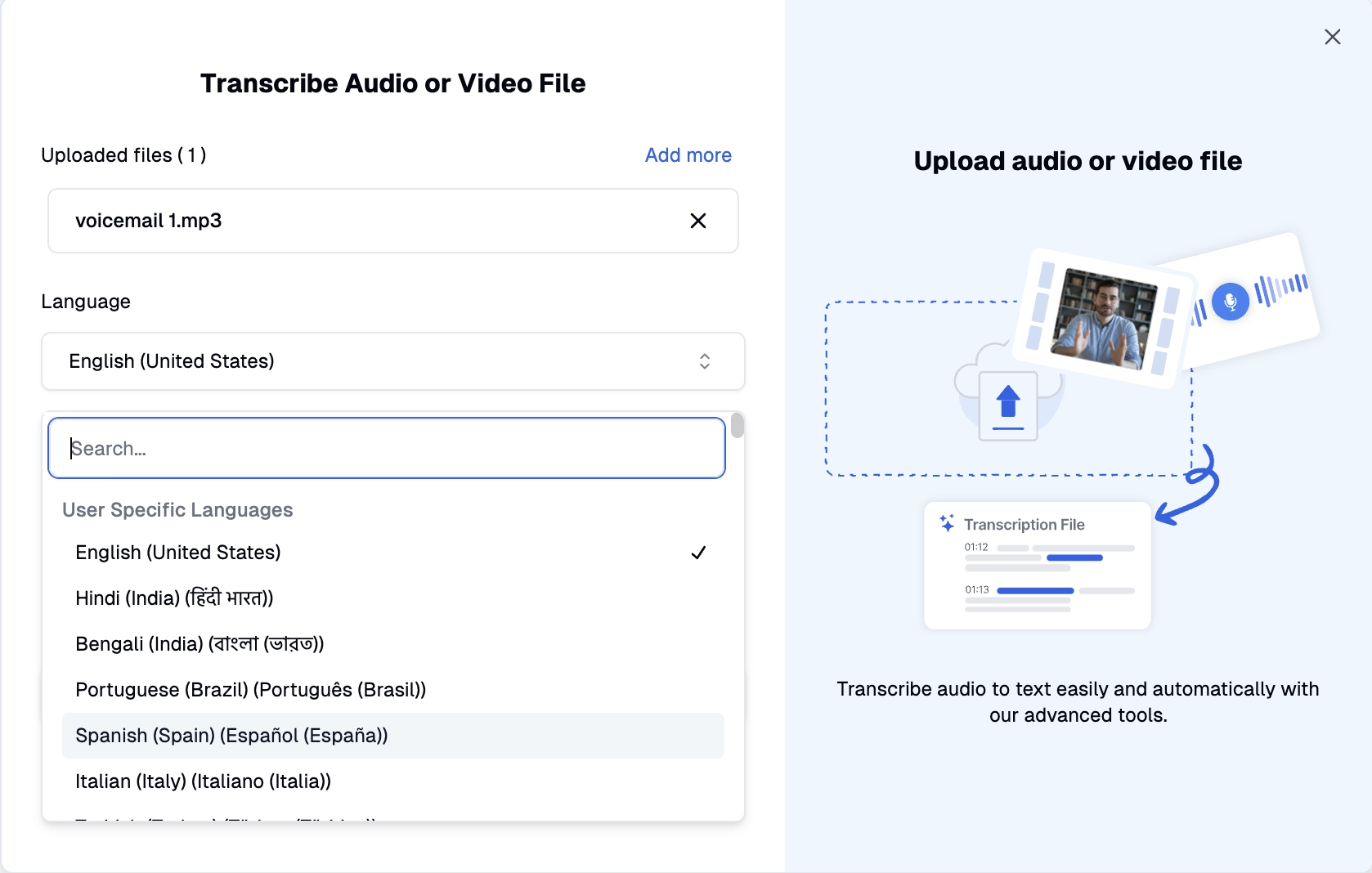
3. Choose Language and Manage Additional Settings
Select the specific language required for transcribing voicemails accurately. The voicemail to text app provides additional customization options including dictionary management, speaker label identification, and speaker count settings for professional voicemail to text conversion.
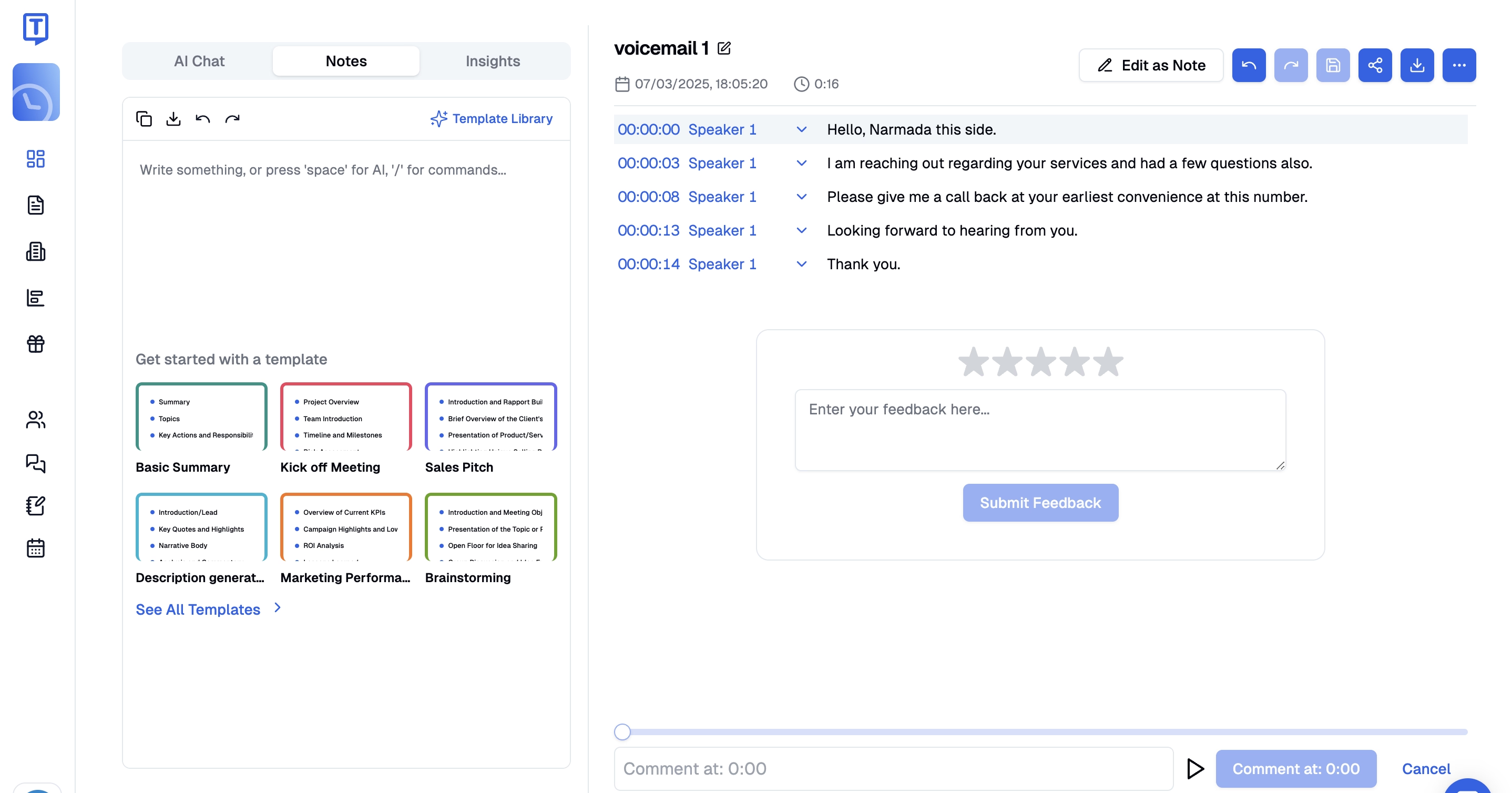
4. Review, Edit, and Summarize
Following processing, the automated voicemail transcription completes a word-for-word conversion without quality compromise. The built-in editing features enable users to check, review, and implement necessary modifications to the transcribed text. The AI Chat feature incorporated in the voicemail transcription service allows users to ask questions about the transcription content and generate summaries of key information.
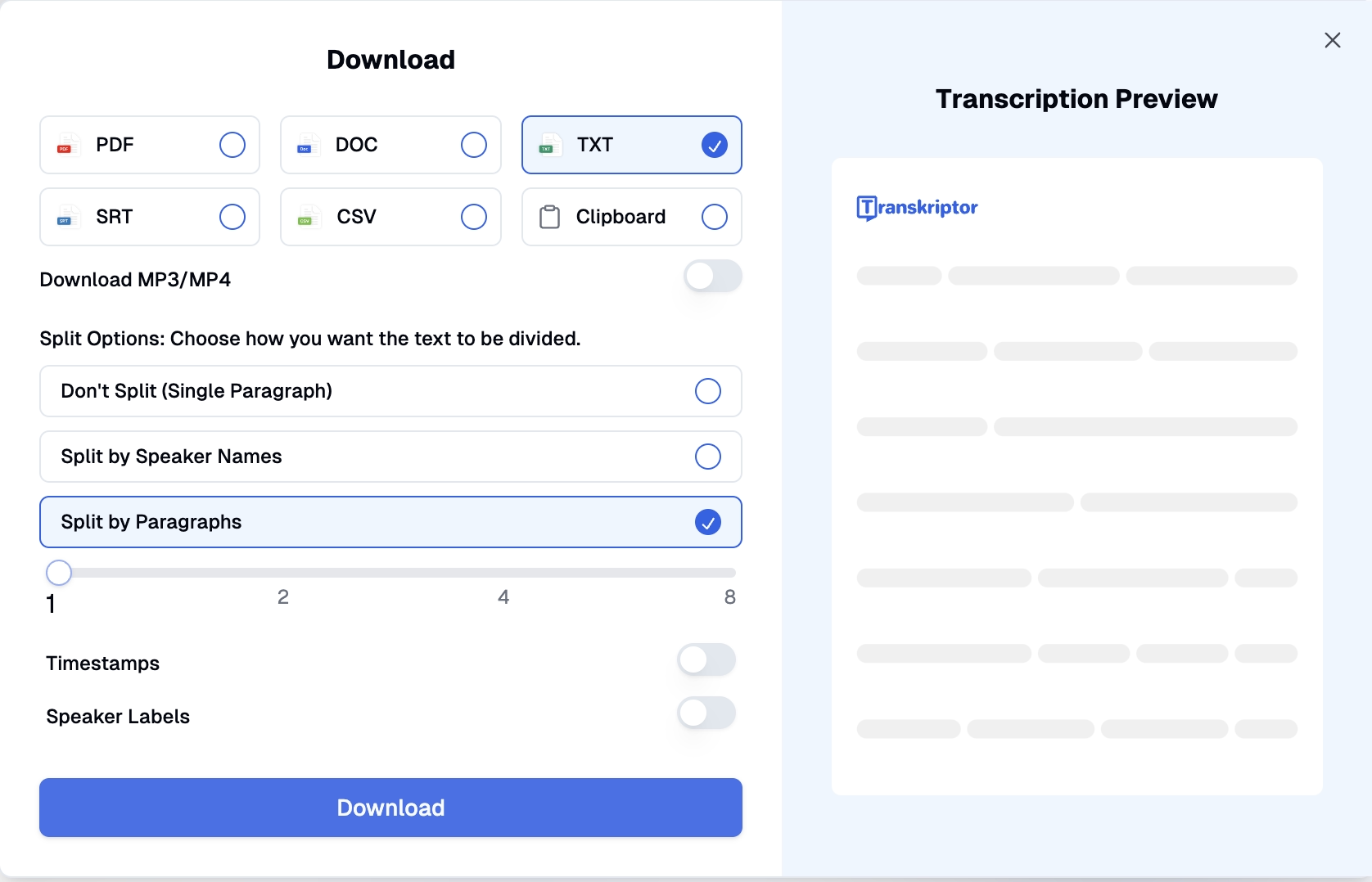
5. Download and Share
After verification, download the transcribed voicemail file or copy the text directly to clipboard for immediate sharing. The digital voicemail transcription system offers multiple download format options including PDF, Word, TXT, CSV, and SRT. Business voicemail transcription users can adjust paragraph length according to specific requirements before distribution.
Best Features for Professional Voicemail Transcription
Professional voicemail to text solutions must incorporate these essential features:
Speaker Identification and Multi-voice Messages
Speaker identification distinguishes between participants in group voicemail recordings, enhancing clarity in conference calls. This feature ensures accurate attribution of comments in multi-speaker voice message transcription.
Timestamping and Organizational Tools
Timestamps allow precise reference points when transcribing phone messages, enabling quick location of specific segments. Organizational tools enhance digital voicemail transcription by sorting content by date, caller, and subject for efficient retrieval.
Generating AI Summaries from Voicemail Transcriptions
Effective voicemail transcription services incorporate AI summary capabilities for extracting key points. This automated analysis enhances decision-making by providing concise insights from lengthy voicemails.
Business Voicemail Transcription Best Practices
Effective implementation requires strategic planning:
Setting Up an Efficient Voicemail Transcription Workflow
Integration with existing business systems like CRM platforms enhances workflow efficiency. Automation capabilities send transcribed voicemails directly to appropriate team members, simplifying communication processes.
Security and Privacy Considerations
Voicemail transcription services must adhere to compliance standards including GDPR and HIPAA. Proper platforms implement secure protocols and confidentiality agreements to protect sensitive information during digital voicemail transcription.
What are the Best Voicemail Transcription Tools?
Voicemail transcription software enhances productivity while providing multilingual capabilities. Here's a quick overview of the top solutions:
- Transkriptor : Best overall with 100+ languages and AI summarization
- Otter.ai : Ideal for meeting integration with collaborative features
- Rev : Premium option combining AI and human review
- Temi : Budget-friendly with fast processing and simple interface
- Google Speech-to-Text : Developer-focused with extensive language support
- Microsoft Azure : Enterprise solution with custom acoustic models
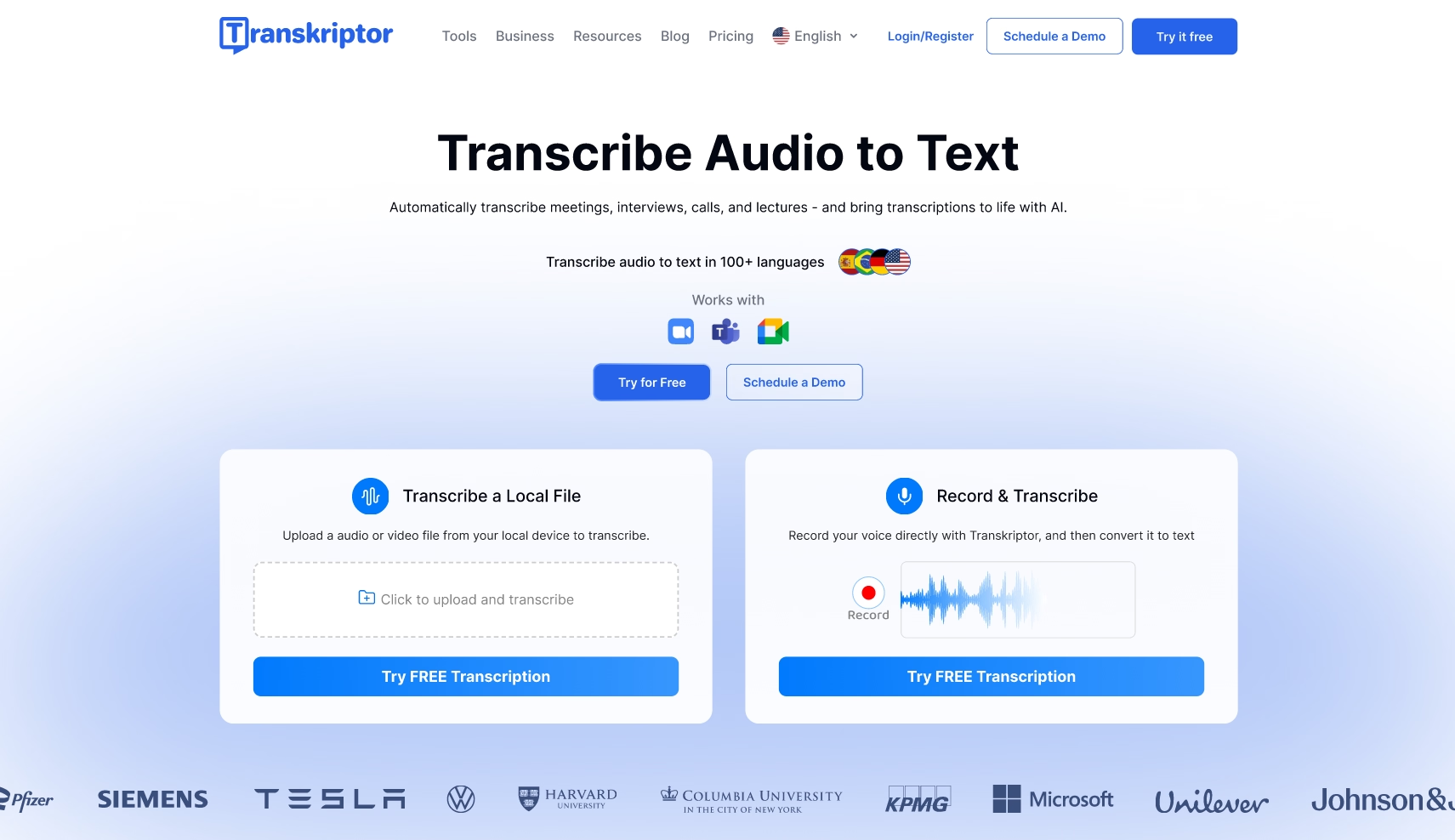
Transkriptor for Voicemail Transcription
Transkriptor functions as an AI-powered voice-to-text platform converting audio files into accurate text. Supporting over 100 languages, it eliminates language barriers in business communications. The service is ideal for businesses, healthcare organizations, sales teams, legal professionals, and IT departments.
For organizations with privacy concerns, Transkriptor ensures data security through SSL encryption and SOC compliance. The platform aligns with GDPR standards and includes an AI Chat feature for extracting key information points from transcriptions.
Key Features
- Multi-Language Support : Supports over 100 languages including German, French, Spanish, English, and Turkish.
- AI Chat/Summary : Generates summaries highlighting key points from transcriptions.
- Secure Data Handling : Maintains GDPR compliance standards for data protection.
- Speaker Identification : Labels each speaker with precise timestamps for quick information location.
- Sharing Options : Downloads transcriptions in multiple formats including Word, TXT, or PDF.
Pros and Cons of Transkriptor
Pros:
- Extensive language support (100+ languages)
- Advanced security features with GDPR compliance
- AI-powered summarization capabilities
- Accurate speaker identification
- Multiple export formats
- Cloud storage integration
Cons:
- Processing time varies with file size
- Learning curve for advanced features
Alternative Voicemail to Text Solutions
When evaluating voicemail to text app options, consider these alternatives:

Otter.ai
Otter.ai functions as a versatile meeting assistant focused on collaborative note-taking and voicemail transcription. The voice message transcription tool integrates seamlessly with popular video conferencing platforms including Google Meet, Zoom, and Microsoft Teams, offering real-time transcription during meetings. Otter.ai provides automated summary generation to capture key points and action items from conversations.
The service currently supports three languages (English, Spanish, and French) and automatically adjusts spelling conventions based on regional settings. Business users appreciate the platform's collaboration features that allow team members to highlight, comment, and search across transcriptions. However, Otter.ai may produce inaccurate results when handling recordings with multiple speakers talking simultaneously or with strong accents.
Pros:
- Seamless integration with video conferencing platforms
- Real-time transcription capabilities
- Collaborative note-taking features
- Automated meeting summaries
Cons:
- Limited language support (only three languages)
- Accuracy issues with multiple speakers
- Subscription required for advanced features
- Limited customization options
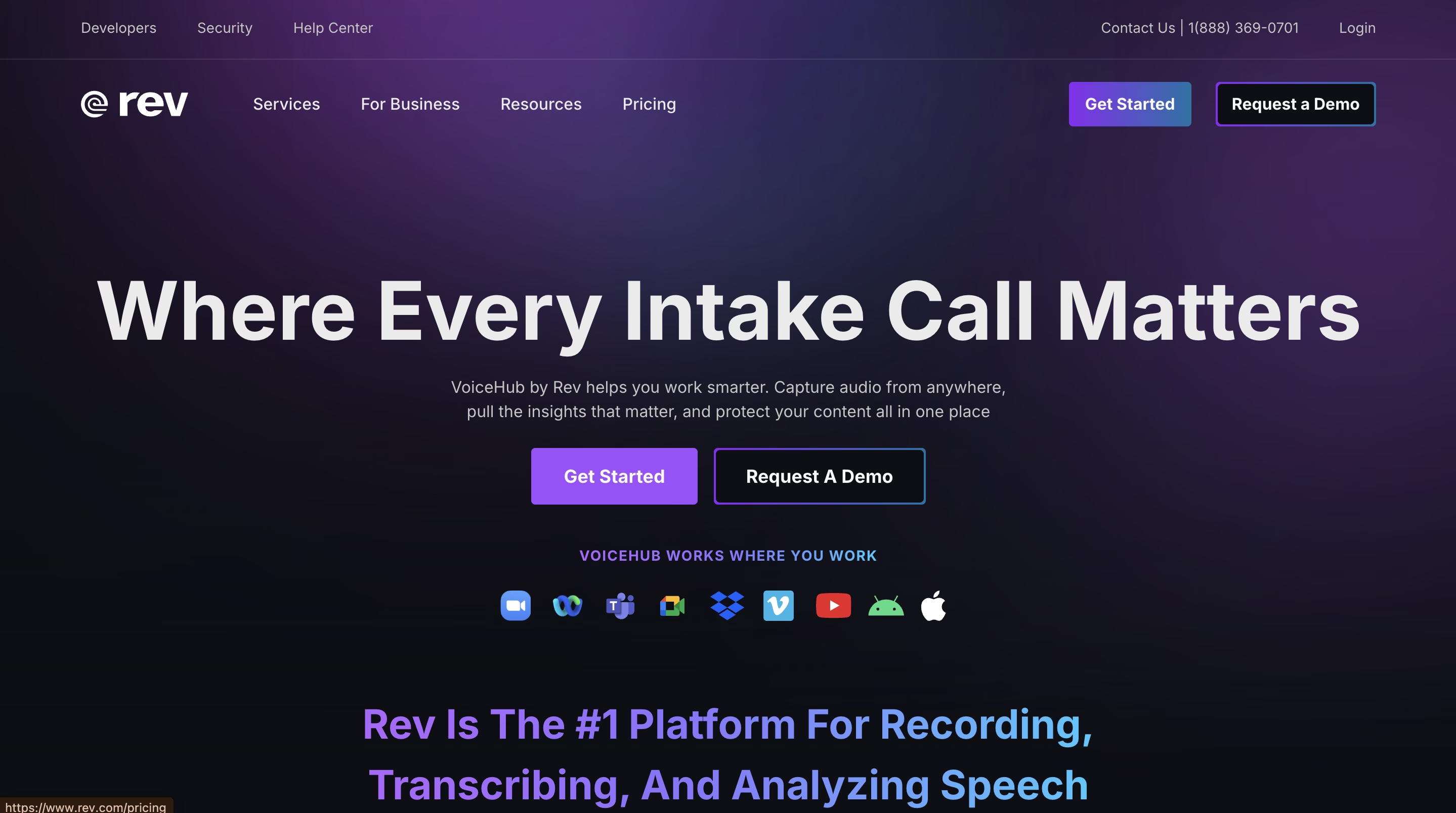
Rev
Rev delivers comprehensive transcription services combining sophisticated AI technology with human expertise for voicemail-to-text conversion. The platform supports more than 36 languages and integrates efficiently with conferencing systems like Webex and Zoom for streamlined workflow. Rev's hybrid approach makes it particularly effective for technical recordings containing specialized terminology that might challenge purely automated systems. The voicemail transcription service offers both quick automated transcription and more accurate human-reviewed options depending on user requirements.
Business customers can leverage Rev's API for custom integration with existing systems and benefit from team management features for enterprise-level deployment. However, Rev's pricing structure is higher than competitors, especially when utilizing human-review services, making it less accessible for small businesses with large transcription volumes.
Pros:
- Human-reviewed transcription option
- Strong accuracy for technical terminology
- Good integration with conferencing systems
- Supports 36+ languages
Cons:
- Higher pricing structure
- Longer turnaround for human-reviewed transcripts
- Less affordable for high-volume needs
- Limited free features
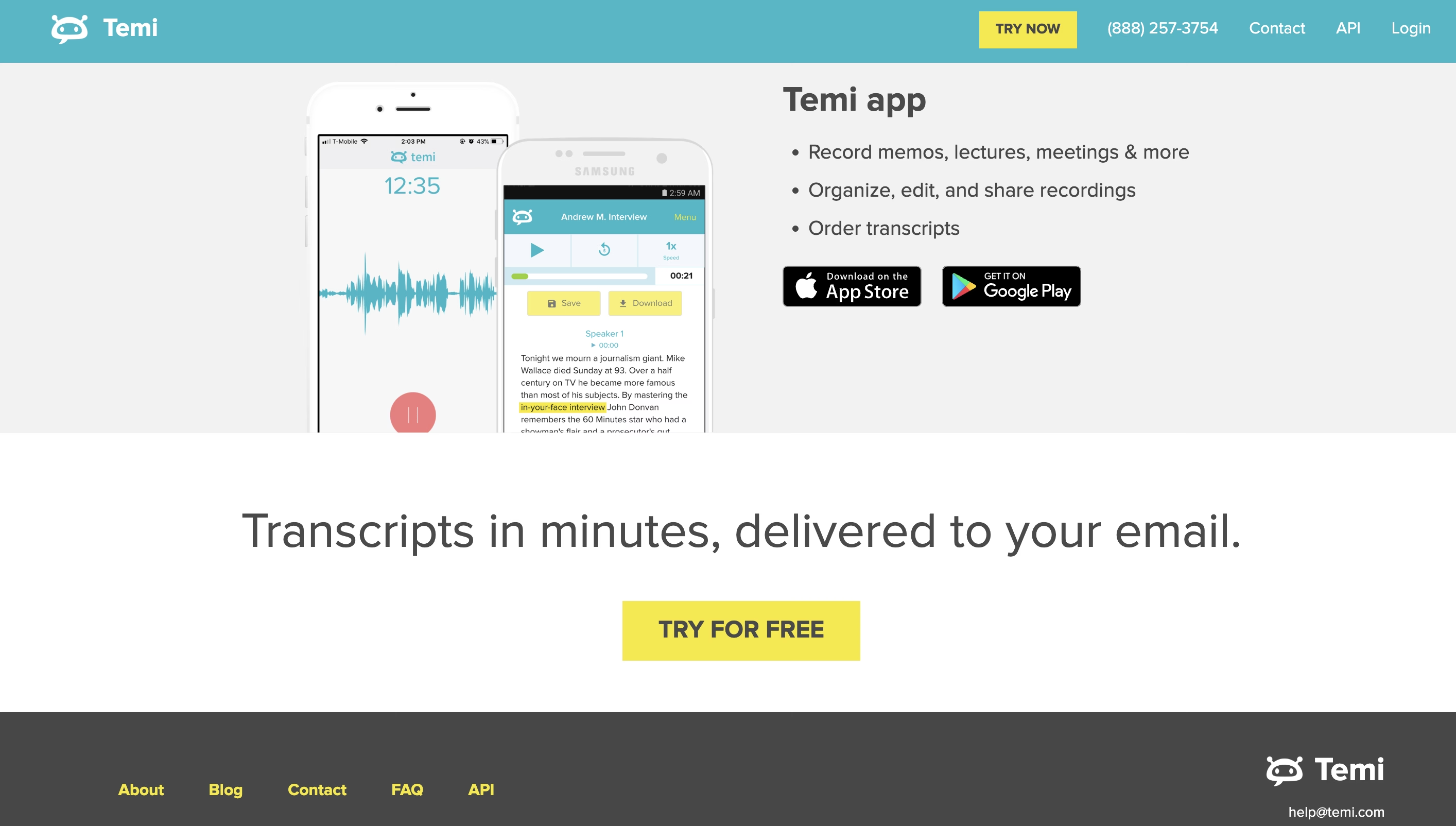
Temi
Temi provides rapid audio-to-text conversion with a straightforward, user-friendly approach to voicemail transcription. The service delivers transcribed results within minutes, making it ideal for time-sensitive voice message transcription needs. Temi includes comprehensive editing capabilities, timestamp insertion, and speaker identification labels to enhance transcript organization. Supporting four languages, the platform serves as a practical solution for reporters, podcasters, content creators, and businesses needing to transcribe phone messages quickly.
The pay-as-you-go pricing model offers flexibility without subscription commitments, appealing to users with variable transcription requirements. The mobile app extends functionality to on-the-go professionals needing immediate voice-to-text conversion. However, Temi struggles significantly with recordings containing substantial background noise and encounters accuracy challenges with strong accents or regional dialects in speech patterns.
Pros:
- Fast processing speed
- Simple, user-friendly interface
- Built-in editing tools
- Pay-as-you-go pricing model
Cons:
- Limited language support (only four languages)
- Struggles with background noise
- Accuracy issues with accented speech
- Fewer advanced features

Google Speech-to-Text
Google Speech-to-Text functions as an advanced automatic speech recognition service powered by Google's sophisticated artificial intelligence for voicemail transcription. The platform supports over 125 languages and regional dialects, creating exceptional versatility for global businesses and multilingual environments. The API-based speech recognition system includes specialized models for different audio types including phone calls, video content, and command-based interactions. Google's service leverages machine learning to continuously improve recognition accuracy and adapt to industry-specific terminology through custom vocabulary options.
The Google Cloud integration provides scalability for organizations processing large volumes of voice message transcription requests. However, the accuracy demonstrates inconsistency with strong accents and regional speech patterns, occasionally omitting words in challenging audio conditions. Implementation requires technical expertise to configure and integrate with existing systems, making it less accessible for non-technical users seeking simple voicemail-to-text conversion.
Pros:
- Extensive language support (125+ languages)
- Integration with Google ecosystem
- Developer-friendly API
- Voice command optimization
Cons:
- Inconsistent accuracy with accents
- Technical implementation required
- Usage-based pricing can become expensive
- Limited standalone user interface
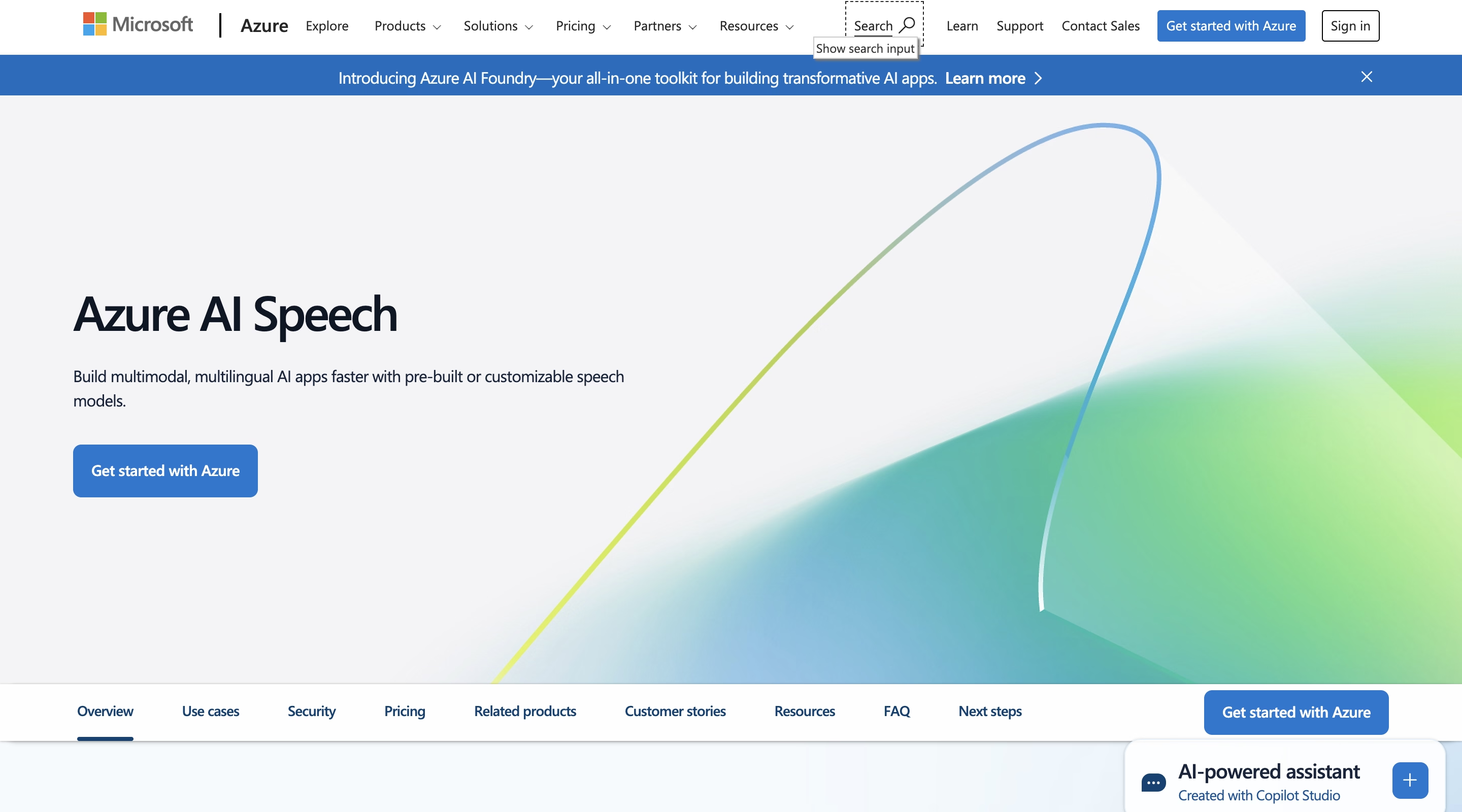
Microsoft Azure Speech Service
Microsoft Azure Speech Service delivers sophisticated speech-to-text conversion capabilities with enterprise-grade reliability for voicemail transcription. The platform provides batch processing functionality from various audio sources, enabling efficient handling of large voicemail archives. Advanced features include speaker diarization to differentiate between multiple voices and custom acoustic model creation for improved accuracy in challenging audio environments.
The service integrates seamlessly with other Microsoft productivity and business intelligence tools, creating a unified ecosystem for organizations heavily invested in Microsoft technologies. Azure Speech Service supports real-time transcription alongside batch processing to accommodate different business voicemail transcription workflows. Custom neural voice capabilities extend functionality beyond basic transcription for organizations with diverse communication needs. However, the complex pricing structure based on hours processed can become costly for high-volume usage scenarios, and implementation typically requires technical expertise or developer resources to maximize platform capabilities.
Pros:
- Custom acoustic models available
- Strong integration with Microsoft ecosystem
- Batch processing capabilities
- Advanced speaker diarization
Cons:
- Costly for high-volume usage
- Technical expertise required for implementation
- Complex pricing structure
- Steeper learning curve
How to Improve Voicemail Transcription Accuracy
Achieve accurate conversion by optimizing these elements:
Optimizing Audio Quality for Better Transcription
Clear recording quality remains essential for accurate transcription. Select quiet environments, speak clearly, and minimize background noise. Stable internet connections and noise-reduction tools enhance overall audio quality for digital voicemail transcription.
Editing and Refining Voicemail Transcriptions
After initial transcription, thoroughly review for errors, particularly with technical terminology. Check for misinterpreted words while ensuring context preservation throughout the document. Regular editing maintains accuracy in final voice message transcription.
Integrating Voicemail Transcription Into Business Communications
Digital voicemail transcription enhances information accessibility through:
Creating a Searchable Voice Message Archive
Well-structured systems enable straightforward storage and retrieval of transcribed content. Categorization by date, caller, or subject facilitates quick search capabilities and access to specific information.
Using Transcribed Voicemails for Team Collaboration
Sharing transcribed voicemails among team members facilitates effective collaboration. Integration with platforms like Slack and Microsoft Teams enables seamless information distribution and collective discussion.
Conclusion
The capability to accurately transcribe voicemails has become essential in fast-paced business environments, enhancing productivity, compliance, and customer service. According to Grand View Research , the US transcription market will likely grow at 5.2% CAGR from 2025-2030, reflecting increasing business reliance on transcription technologies.
Transkriptor delivers professional voicemail to text solutions with seamless integration, multi-language support, AI assistance, and comprehensive speaker identification. Businesses seeking effective voicemail management should explore Transkriptor's capabilities for streamlined communication and enhanced accessibility. Try it now!
Frequently Asked Questions
Yes. Several AI-powered tools, like Transkriptor, transcribe voicemails in 100+ languages. You simply need to upload the audio, and it will transcribe it in a few minutes. You can edit, review, and download the transcription for easy sharing.
Yes. Transkriptor is a multilingual voice-to-text app that can convert voicemail to text using very simple steps. It converts with up to 99% accuracy, labels speakers, and adds timestamps.
Yes. AI tools like Transkriptor and Otter.ai struggle with heavy background noise or strong accents. Solutions like Transkriptor can efficiently work with multiple speakers in noisy audio.
AI tools like Transkriptor use SSL encryption and GDPR-compliant protocols to protect data. Your voicemails will be stored securely, ensuring confidentiality for sensitive business communication.
The best AI tool for business voicemail transcription is Transkriptor. It supports 100+ languages, adds timestamps, and uses speaker labels—perfect for turning client voicemails into actionable written records.

